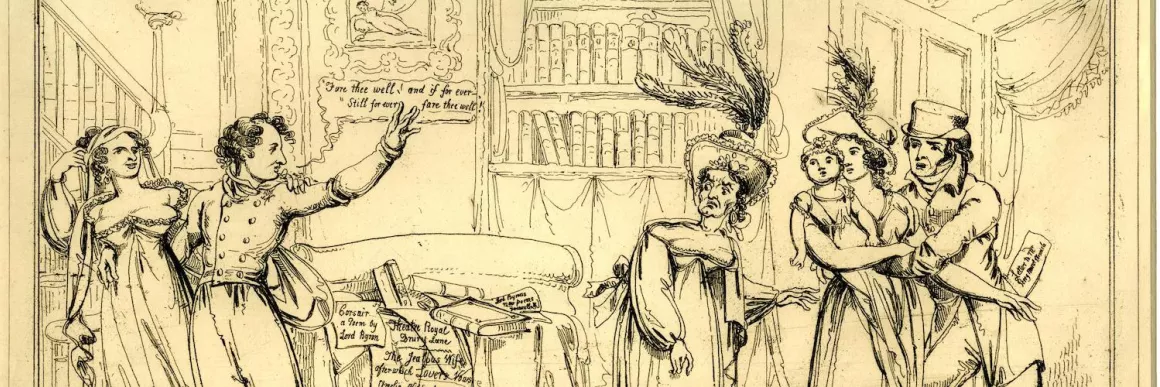© The Trustees of the British Museum. Shared under a Creative Commons Attribution-NonCommercial-ShareAlike 4.0 International (CC BY-NC-SA 4.0) licence.
Romantic-era fans collected autographs, souvenirs, portraits and relics of celebrity writers, artists, performers and athletes; pored over gossip-filled periodicals and newspaper notices; imitated celebrities' fashion statements; fantasized about becoming friends or lovers with celebrities; got caught up in "crazes" for persons and texts; created fan fiction, wrote fan mail and formed communities of like-minded devotees. Analyzing fan practices across a range of cultural contexts, the essays in this volume will explore how the concept of "fandom" can help us make sense of the role of various audiences in the cultural activity and cultural productions of the Romantic period.
Abstract
Romantic-era audiences participated enthusiastically in what we would now recognize as fan practices and fan cultures. In his introduction to this volume, Eisner proposes an understanding of fandom as a culturally situated, qualitatively distinctive, and complexly mediated form of audience response, arguing that fandom rewards analysis as a historical phenomenon in its own right and not simply as a register of the celebrity of the objects of fan interest.
Abstract
This essay investigates how the concept of fandom might make sense of a reading practice that emerged in the romantic period, the practice of visiting places associated with authors and their works in order to re-read their works in situ. Focussing on Lady Frances Shelley as a typical romantic literary tourist, the essay considers the ways in which she (and by extension others) produced new constructions of reading and the reader in response to the emergent figure of the romantic author.
Abstract
This essay examines Stendhal’s recollections of his meeting with Byron in Milan in 1816 at La Scala, and reads these recollections as the revelatory staging of a close encounter between celebrity and fan. It argues that Stendhal’s recollections suggest how practices of sensation can be understood in terms of the affective routines of the fan that are such a vital component of celebrity culture.
Abstract
This article analyzes the complex political and cultural rhetorics through which the journal Satirist refracts the figure of Byron in its reviews, its social satire, and its verbal and visual parodies, starting with its 1807 review of Byron’s Hours of Idleness.
Abstract
The early 1820s craze for Pierce Egan's and Robert and George Cruikshank's Life in London has long seemed both deeply puzzling and yet somehow emblematic of its age. Brewer proposes that the mania becomes far more explicable if we focus, in a very precise way, on the interplay between serial publication, the so-called "illegitimate" theater, and the geography of London, especially insofar as those relations, in turn, line up with the peculiar and rapidly shifting reputation and mood of the metropolis in these years.

